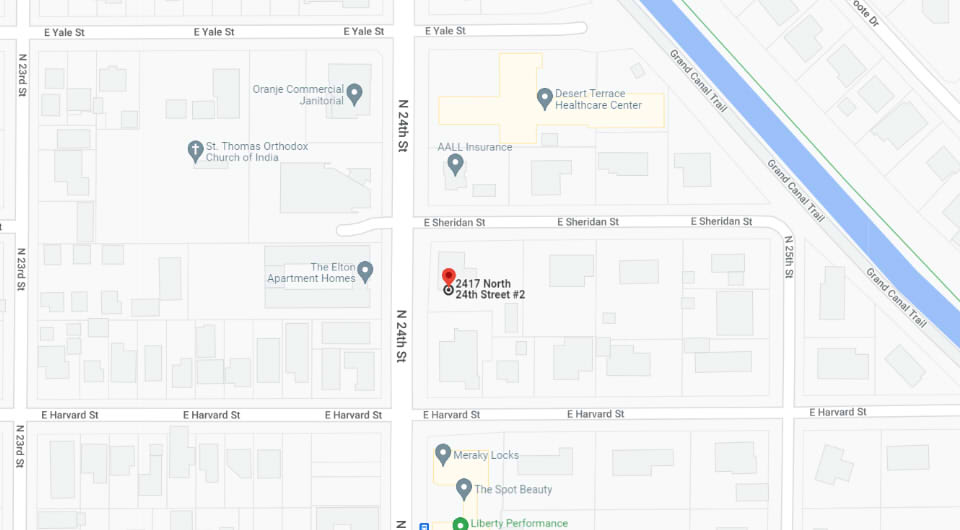Using forceps or a vacuum during labor and delivery poses a risk of trauma. When used properly, the risk of injury from forceps and vacuums is minimal. However, problems such as hematomas and retinal hemorrhages can occur. In general, it isn't appropriate to give birth to a baby using both a vacuum and forceps. The use of forceps and a vacuum is always regarded as an interim option that can call for additional assistance. If your loved one has suffered forceps or vacuum injuries during delivery or pregnancy due to negligence, you can reach out to the Phoenix Personal Injury Attorney Law Firm. Our team can offer professional legal counsel and assistance in seeking compensation.
Overview of Forceps and Vacuum Extraction
Vacuum extraction and forceps are examples of assisted vaginal births. Forceps are long, tong-like instruments that are placed on both sides of a newborn's head to assist in guiding the newborn out of the delivery canal. In most cases, this is performed as the pregnant woman pushes through a contraction.
Vacuum extraction involves a procedure where a rigid or soft cup is put on the baby's head through suction to aid in guiding the infant out of the delivery canal. Similar to using forceps, vacuum extraction is often carried out when the woman pushes the newborn through a contraction.
Understanding Medical Malpractice Under Arizona Law
It is important to hire legal counsel to represent you in a medical malpractice case since Arizona's laws on the matter are complicated. Several complex civil laws govern legal action for medical malpractice. The courts can turn down your request for compensation if you make an error when preparing or presenting your claim.
You can be sure that your personal injury lawyer will double-check each step of the filing process while they are handling your case. A qualified attorney is familiar with Arizona's medical malpractice laws.
Statute of Limitations
If you believe you have proof of medical malpractice, you ought to act fast. Arizona's statute of limitations permits you to submit a claim only two years after the incident occurred. If you fail to keep up with this time limit, the court will probably prevent you from receiving compensation.
Medical Expert's Affidavit
Arizona courts require a legal declaration showing that you have sufficient grounds for a tort claim, as recognized and approved by a medical professional who practices in the relevant field.
No Damage Caps
To prevent healthcare facilities from going out of business, several governments cap or limit the amount of compensation a medical malpractice victim can get. However, Arizona law does not have any caps on damages. State laws forbid limiting a victim's recovery.
These represent only three of the numerous statutes that can be relevant in your Arizona forceps and vacuum injuries case. Other laws include comparative negligence, joint and multiple responsibilities, and wrongful death laws. A personal injury attorney can explain the laws that are relevant to your case, giving you a clearer picture of what you can expect. Your lawyer will then handle the claims process on your behalf, freeing you up to focus all of your time and energy on recovering from your injuries.
When Using Forceps or a Vacuum is Appropriate
In cases where there are complications, like prolonged labor or fetal distress, forceps or a vacuum are often used to help guide the newborn out of the delivery canal. They aren't used during normal deliveries unless there is a sign that the mother might be unable to give birth naturally. Using vacuums or forceps doesn't always lead to complications and thus shouldn't raise any red flags.
Fetal Stress
Fetal distress, often known as oxygen deprivation in infants, can occur during labor. Among the symptoms of fetal distress are:
- Alterations in the infant's heart rate (tachycardia refers to an excessively high heart rate, while bradycardia represents an abnormally low heart rate).
- Arrested or decreased fetal movement.
- Abnormal levels of the amniotic fluid.
A medical professional can choose to use a vacuum or forceps to expedite labor or prevent a cesarean delivery if the newborn shows signs of fetal distress.
Shortened Second Labor Phase
The second phase of labor, also known as the "pushing" phase, starts after the cervix fully expands (10 cm), and it ends with delivery.
For a first baby, the second phase of labor normally takes a maximum of two hours, and for subsequent children, it often lasts an hour. A shortened second stage of labor would result in the baby being born in less than two hours. This is also known as precipitous or rapid labor.
The fact that the contractions are coming too quickly and the expectant mother does not get enough rest is one indication that she is going through rapid labor. The infant can be guided out with the aid of a vacuum to reduce the risk of aspirating amniotic fluid and prevent cerebral bleeding caused by the sudden shift in pressure placed on the baby's head during fast expulsion.
Prolonged Second Labor Phase
The prolonged second phase is the most common scenario where a vacuum or forceps could be required. When the second phase of labor advances abnormally, it is referred to as prolonged labor or failure to progress. Failing to advance can mean that the second phase has lasted longer than two hours, that the labor has been stopped or slowed down, or that the labor contractions come at an unusual rate. Fetal distress that occurs during prolonged labor can call for an assisted vaginal delivery using tools like a vacuum or forceps.
Maternal Fatigue
Maternal exhaustion, also known as maternal fatigue, is a medical term for the symptoms of exhaustion and dehydration that worsen during prolonged labor. An expectant woman who has endured prolonged labor for more than 20 hours may get relief from an aided delivery. Contraction changes, a dry mouth, and an increase in heart rate are all signs of maternal exhaustion.
Why Vacuum Extraction and Forceps are Used as Intervention
Intervention might be regarded as necessary in these circumstances:
- Even though the expectant woman has been pushing, labor has not progressed.
- The newborn's heartbeat changing suggests a potential issue and the necessity for a rapid delivery.
- A prolonged period of pushing could worsen the mother's underlying medical condition, such as high blood pressure or heart disease.
- The expectant woman has started hemorrhaging and labor is about to start.
The woman's cervix should be adequately dilated, safety measures should be met, and there should be no contraindications to using a vacuum extractor or forceps.
Birth Injuries Caused By Forceps Delivery
When a physician or midwife improperly uses forceps or uses them without sufficient training, there is a risk of injuring the newborn. The blades should be positioned precisely, and the mother's traction should be accurately measured while she pushes. Using inappropriate blades, pushing at the wrong time, or pushing too hard could result in serious injury.
The following are some injuries related to forceps deliveries:
- Facial injuries brought on by the forceps' pressure.
- Facial palsy, or facial muscular weakness.
- Damaged cranial nerves.
- Clavicle fracture.
- Brain bleeding.
- Hypoxic-ischemic encephalopathy.
- Intracranial bleeding.
- Brain damage due to ischemia.
- Cerebral palsy.
- Crack in the skull.
- Injury to the eye.
- Horner's syndrome.
- Death.
- Seizures.
Injuries Associated with Vacuum Extraction
In recent years, vacuum extractors have surpassed forceps in popularity, despite mounting data that suggests the latter technique could be more hazardous. It shouldn't be used unless there is a compelling case and reliable, informed consent. Vacuum extraction should also not be applied if the baby needs to be repositioned or if the newborn's head is too big for the mother's pelvic region or is too high in the delivery canal.
The use of a vacuum or forceps can endanger both the infant and the mother. The tools can be misused by placing them incorrectly, applying too much force, or utilizing them for an extended period. Vacuum positioning errors can result in fractured skulls, shoulder dystocia, and cuts to the scalp. Minor face or eye scrapes, facial palsy (muscle paralysis), skull hemorrhage, and convulsions are all potential side effects of forceps.
Vacuum extractors use either rigid or soft cups. Using the incorrect size or kind of cup might result in cephalohematoma, a fractured skull, and damage to the scalp. When a baby is delivered using the help of equipment, it may twist its neck or head as it exits the delivery canal. This could result in injuries to the muscles, torticollis, or brachial plexus injury.
Serious injuries can result from improper usage of a vacuum extractor, including the following:
- Head injuries.
- Retinal bleeding.
- Subgaleal bleeding, or hemorrhage from a ruptured vein into the area between the skull and the scalp.
- Nerve injury.
- Injury to the brachial plexus.
- Brain injury due to ischemia.
- Cerebral palsy.
- Paralysis.
- Bleeding brain.
- Hypoxic–ischemic encephalopathy.
- Death.
- Seizures.
It’s only appropriate to use forceps or a vacuum to help guide the infant through the canal without pulling or exerting too much force. A newborn can sustain significant injuries if the tools are used too forcefully or if they are dragged in the wrong position.
Before deciding to carry out an emergency cesarean operation, a medical professional can use tools such as vacuums or forceps for a prolonged period. If the newborn is kept in the delivery canal for prolonged periods, it could suffer neck fractures or other complications.
Types of Birth Injuries Linked to Forceps and Vacuums
The list that follows touches on a few of the more frequent injuries but doesn't address all of the issues that an infant or mother might face after an assisted vaginal birth.
Hydrocephalus refers to the accumulation of fluid in the deep brain cavities, or ventricles. As the fluid builds up, the pressure on the brain intensifies and harms the brain. Physical signs include an abnormally large head, vomiting, changes in the shape or size of the head, and newborn seizures. Congenital hydrocephalus, which is a medical condition prevalent during birth, may also have developed from birth trauma brought on by excessive pressure exerted during labor and delivery.
Subgaleal hematoma occurs when the emissary veins, which connect the scalp veins to the dural sinuses, rupture. Blood collects on the head's top, just beneath the scalp. It could be noticeable as a solid bump on the baby's head. Incorrect usage of vacuum extractors can often result in a subgaleal hematoma.
A cephalohematoma develops when pressure during labor tears open small blood vessels in the fetal skull. This could occur if the mother's pelvis presses the head against it during labor or if a vacuum extractor or forceps are used to help with the delivery. A cephalohematoma manifests itself physically as a soft, elevated spot on the baby's head.
Using forceps or a vacuum extractor might result in complications for the expectant mother. During childbirth, a physician usually performs an episiotomy, which involves making an incision in the perineum. The episiotomy might get infected, painful, or reopen, which would halt the recuperation process.
The Benefits of Hiring a Medical Malpractice Lawyer
People who have suffered harm due to a medical professional's negligence or mistake have the right to sue for financial compensation in civil court. Getting the proper reimbursement from a medical professional or hospital is not always easy.
Healthcare and medical professionals often deal with insurance companies that have a reputation for disputing, postponing, and undervaluing cases. If you're going up against an Arizona insurance company over medical negligence, your lawyer can help.
While a lawyer manages your claim, you can focus on getting better. Your lawyer will be ready to examine your case, investigate for signs of negligence, gather any necessary evidence, draft a claim against the appropriate defendant, and represent you in front of insurance companies.
An attorney knows how to negotiate with insurance providers to secure a fair recovery. If you're unable to reach an agreement with the insurance provider and they fail to be fair, your lawyer may be able to file a medical negligence claim on your behalf.
FAQs About Forceps or Vacuum Injuries
Some of the most frequently asked questions concerning forceps and vacuum injuries are as follows:
What Are The Differences Between Vacuum And Forceps?
Vacuum extraction and the use of forceps are two methods of assisted vaginal birth that can be used as an expecting mother pushes the newborn during contractions. A vacuum extraction involves placing a rigid or soft cup on top of the infant's head, while forceps look like a pair of tongs or spoons and are put to use for sliding on both sides of the infant's face and head.
Why Would A Laboring Mother Require Forceps Or A Vacuum Extraction?
There are various reasons why a physician might choose a vacuum or forceps during delivery. The main reasons for choosing assisted vaginal delivery are when the newborn isn't progressing quickly enough, when the baby's heart rate changes, and when the pregnant woman is feeling exhausted.
Is It Possible That Medical Negligence Led To My Child's Injury?
If your child was hurt during delivery and forceps or a vacuum were used, you might be wondering if you could file a claim for medical malpractice. You can speak with a lawyer to have your claim looked into if you have doubts about whether your newborn was hurt during delivery or labor.
Medical professionals and hospitals might not tell you what caused the newborn's injuries. You should consider hiring a lawyer to investigate the issue on your baby's behalf. Medical malpractice does not necessarily occur in every situation or accident, but it does in far too many. You are entitled to look into the situation and learn the truth, whatever it turns out to be.
What Can Induce Injury During Birth As A Result Of A Vacuum Extraction?
A vacuum cup helps hold the newborn's head in place during birth. Vacuum extraction may result in neurological damage, cephalohematoma, brain bleeding, retina hemorrhage, and cuts or sores on the scalp.
What Can Cause Injury From Using Forceps During Delivery?
Forceps are used to assist with guiding the newborn through the delivery canal. Forceps injuries to the eyes or face, facial nerve damage, subgaleal hematomas, fractures of the skull, and cerebral bleeding are all possible effects.
Is It Usually A Sign Of Medical Malpractice When A Vacuum Or Forceps Are Used?
No, there are numerous legitimate reasons why a physician might use forceps or a vacuum extractor to assist in guiding the newborn out of the delivery canal. If issues arise, like fetal distress or extended labor, using an instrument could offer relief to both the expectant mother and the newborn.
Contact A Arizona Medical Malpractice Attorney Near Me
If you or a loved one has suffered a forceps or vacuum birth injury and have questions about the medical treatment received during labor and delivery, you can reach out to the Phoenix Personal Injury Attorney Law Firm. Our firm has professional attorneys who have experience and are available to help you and your loved ones. Call us at 602-641-9589 to discuss your potential claim and learn how we can help.










